Minimalism
To recreate this style, you need to give up numerous items that fill the apartment. Minimalism is not suitable for everyone: people who cannot imagine their life without soft blankets, pillows and little things dear to their hearts, it seems too strict.
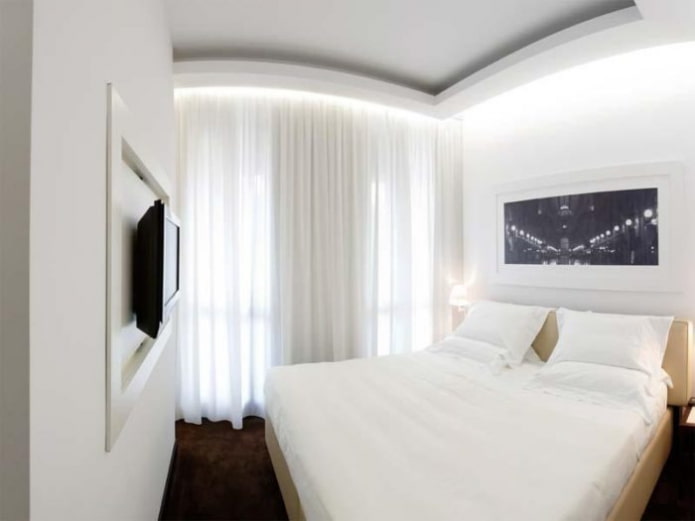
You can soften the asceticism of a minimalist apartment by using warm tones in the wall decoration (milky, white) and light wood furniture. Since minimalism is aimed at simplicity and comfort, it is important to use closed storage systems that help not to clutter the space. Welcome:
- abundance of light (open windows without curtains, thoughtful artificial lighting);
- laconic furniture of simple forms;
- functionality of objects (folding transformable furniture);
- beige, gray and white shades.
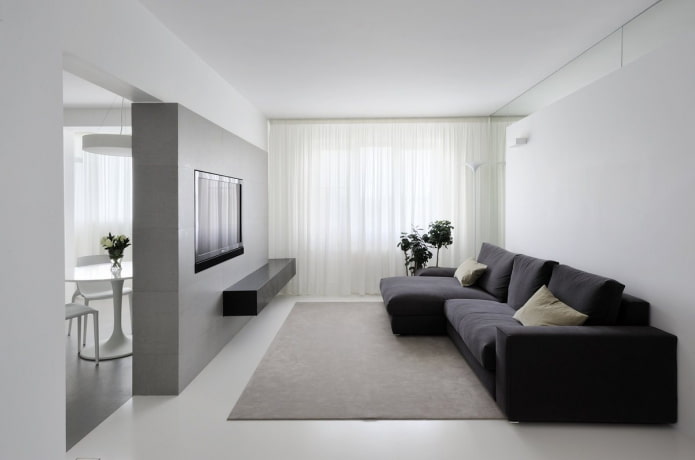
Scandinavian
Is a more comfortable type of minimalism. It gained its popularity thanks to the inhabitants of northern countries, who showed how to reduce the lack of sunlight and increase the pleasure of being in your home. Scandinavian interior is characterized by lightness, harmony and eco-friendliness.
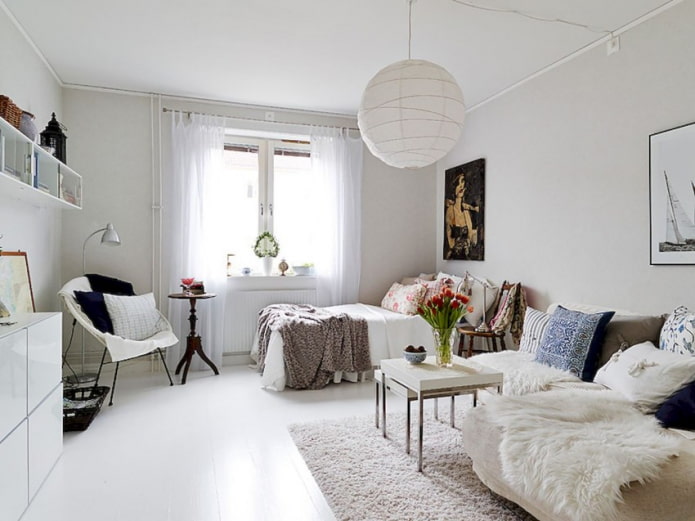
A small apartment seems larger if its walls are painted white or light gray: this way they reflect natural light. Scandinavians use this technique everywhere, and compensate for the lack of color with bright accent details: colored pillows on the sofa, paintings, carpets.
Distinctive features:
- natural materials (wooden floor, glass accessories, clay dishes, linen and wicker);
- simple light furniture that looks as “airy” and unobtrusive as possible in a compact room;
- hand-made elements that add a sense of habitability and look great against the background of simple white walls.
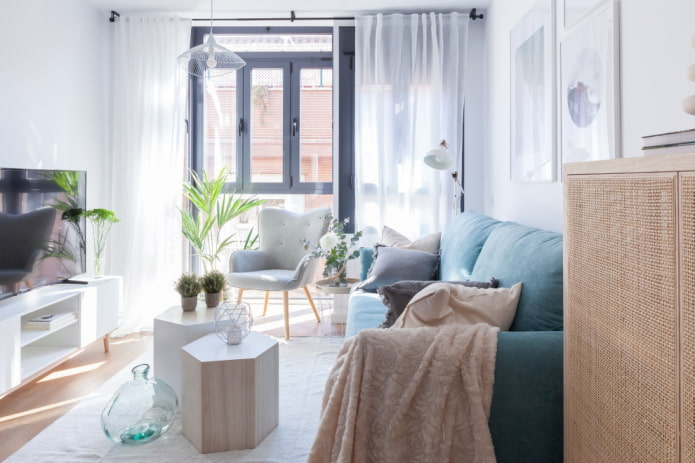
Contemporary
This modern style has abandoned gloss in favor of comfort and practicality. Its distinctive feature is the absence of strict rules plus functionality. The layout should be laconic, with the space divided into several convenient zones. This helps to use the area of a small apartment rationally.
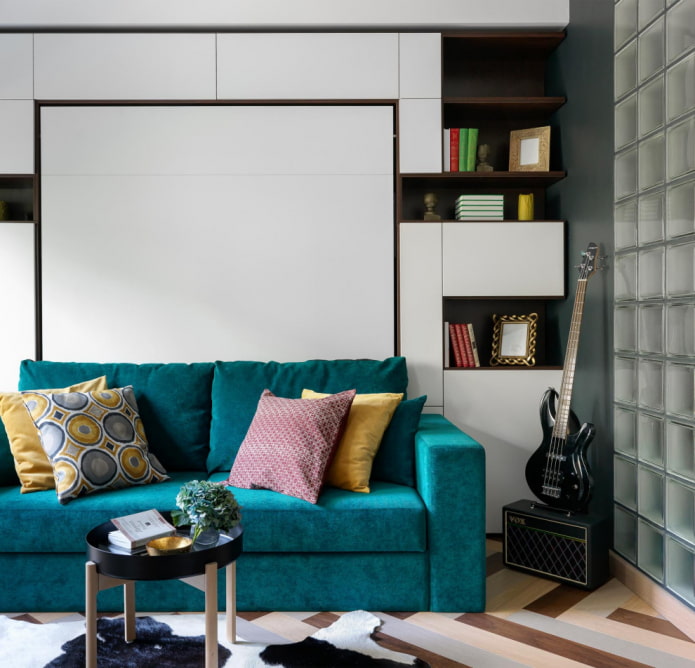
The materials used in the interior can be both natural (wood, stone) and synthetic – plastic furniture, laminate flooring. There are no special requirements for the color scheme: the main thing is that the owner of the apartment feels comfortable in the room.
Contemporary welcomes the presence of reflective surfaces, so mirrors that optically expand the space are very useful here.
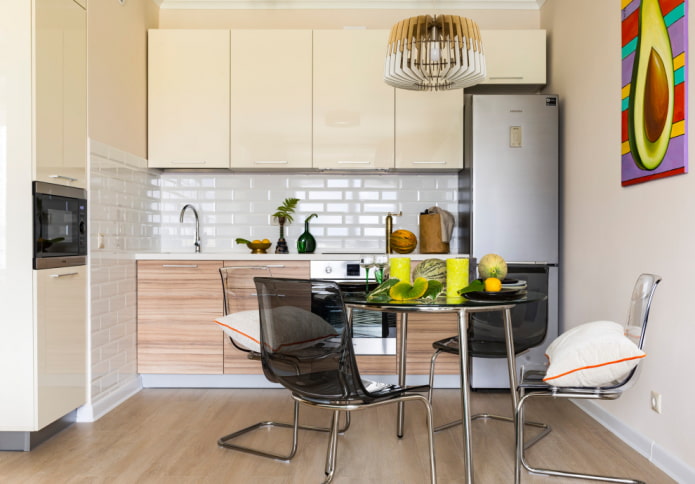
Eco-style with boho elements
A characteristic feature of the eco-friendly direction is the use of natural materials in the decor. In addition to wood, stone and metal, these are:
- glass;
- bamboo;
- natural fabrics;
- rattan;
- cork;
- ceramics.
Imitation is not welcome in eco-style. Plastic windows, laminate, MDF, as well as animal skins are inappropriate here.
Live plants occupy a special place – they please the eye, saturate the air with oxygen and give compact rooms the necessary volume. In addition to the usual flowers in pots, phyto-walls are popular, which serve as a strong accent in the decor. Eco-style is harmoniously combined with boho elements, due to which it looks more modern.
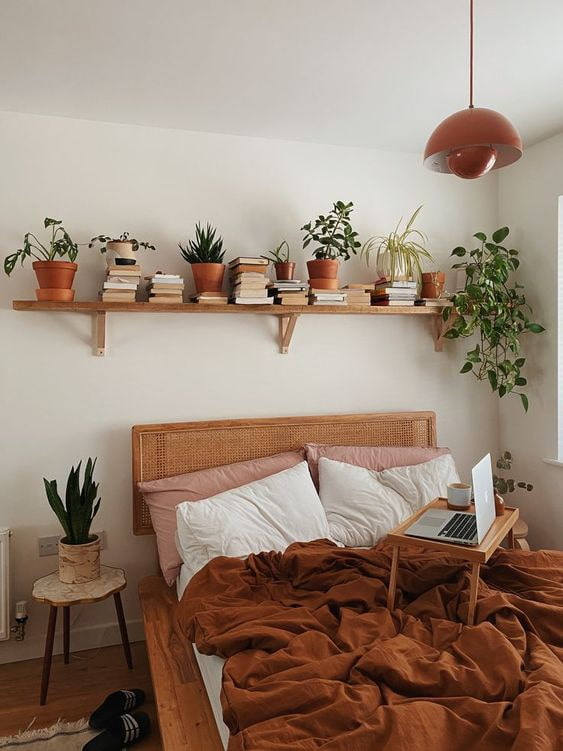
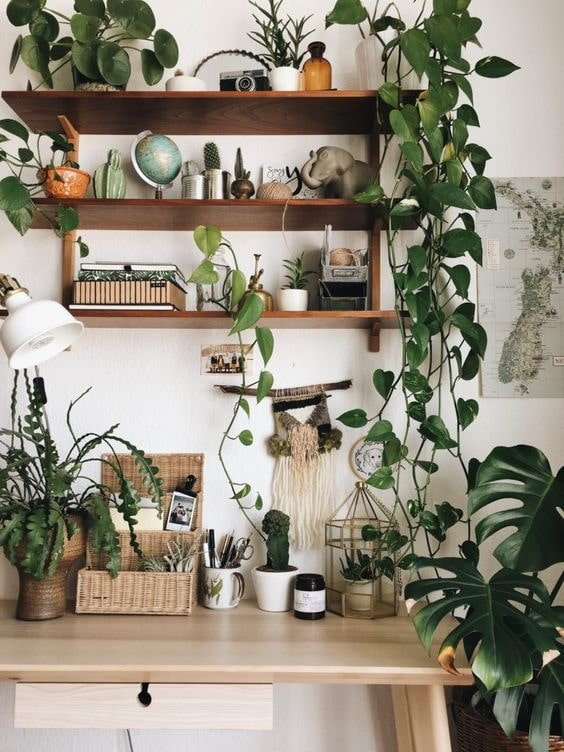
Bauhaus
This is a traditional German trend that combines aesthetics and pragmatism. The main idea is to reject luxury and excesses: straight lines, functional furniture, strict color scheme. The main palette is black, gray and white, other pure shades act as bright accents.
The use of plastic and wood is not excluded, but the hallmark of the style is furniture on metal frames. Decorative elements are something functional – for example, a stylish floor lamp, a set of dishes with a geometric pattern, a board game or even furniture. In a small apartment, Bauhaus looks expensive and stylish.

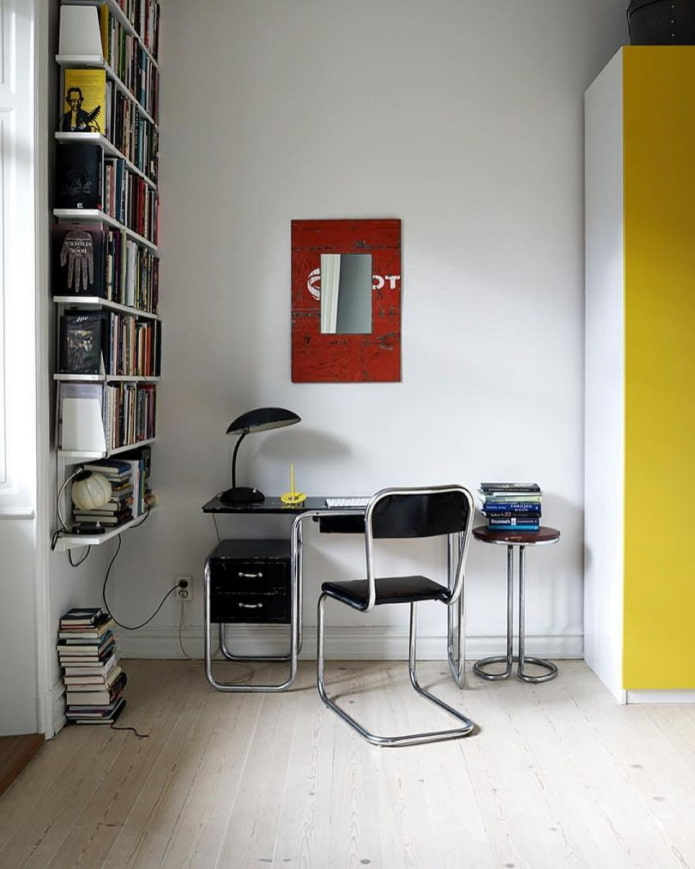
Modern classic
The style can be distinguished by its refined furnishings, devoid of many decorative elements in the form of stucco and curved shapes typical of the classical direction. Suitable for those who value elegance and are not constrained by funds.
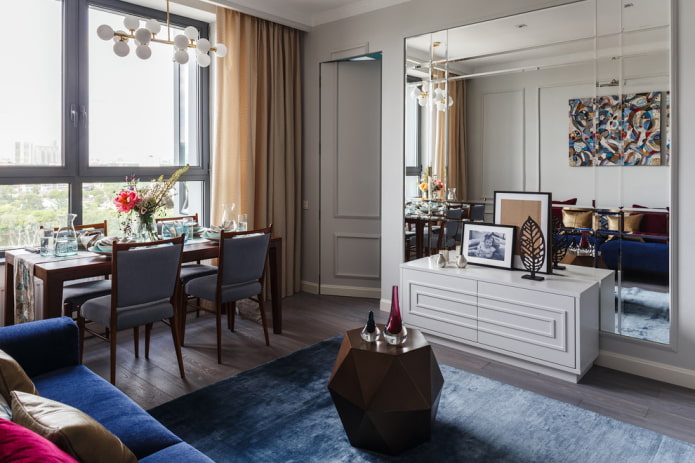
A small apartment can be slightly “expanded” with a light neutral palette and glossy reflective surfaces. Only high-quality materials are used in the decoration. Furniture and textiles are chosen comfortable, but refined, expensive. Decor in the form of statues, floor vases, and works of art are appropriate.
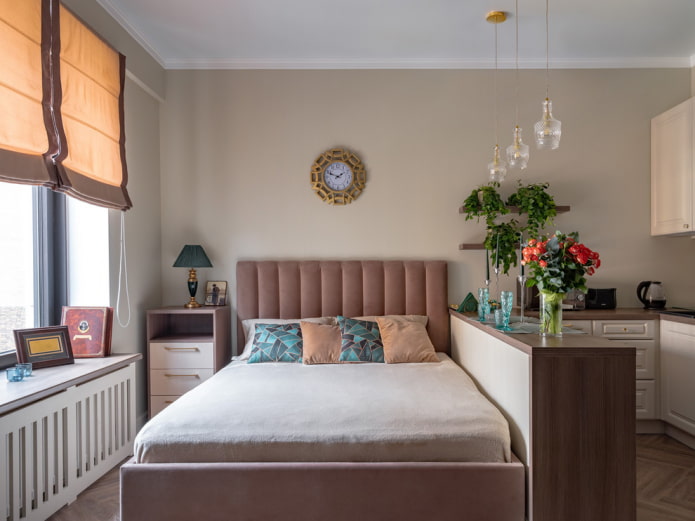
Japanese
One of the types of oriental styles is perfect for decorating small apartments. The Japanese direction is distinguished by moderation in everything, but is not devoid of coziness and Asian charm. The furniture is chosen down to earth, due to which the ceilings seem higher, and there is not much of it. Wood, rice paper, and bamboo are actively used.
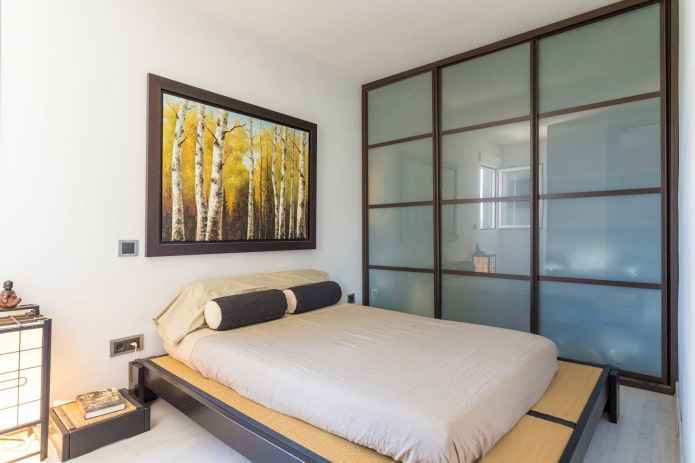
While maintaining the general idea of Japanese minimalism, it must be harmoniously combined with modern technology and furniture, as well as ethnic accessories. The use of discreet patterns in the decor (for example, the well-known sakura), light fabrics or roller blinds on the windows is welcomed. Perfect for decorating a bedroom.
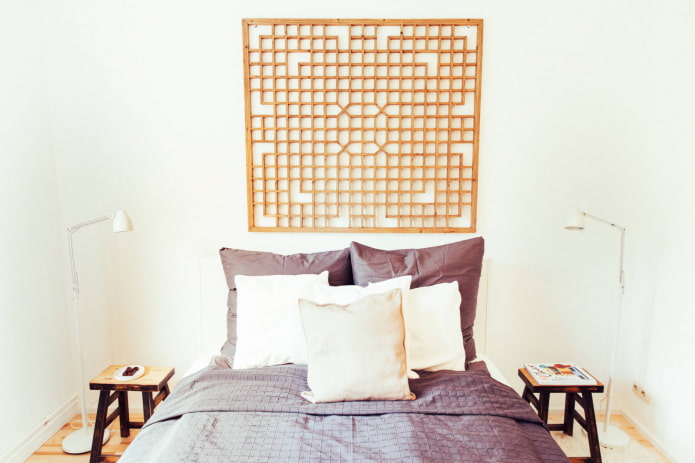
Loft
Despite the fact that the industrial style initially arose thanks to industrial premises, which over time turned into residential ones, its characteristic features can also be used in small apartments. A rough brick or concrete accent wall adds relief to the decor, complicating the light and simple finish in cool tones. Wood is used sparingly.
The loft welcomes exposed pipes, large windows, and “factory” decor. Despite the brutality of the decor, it should look light. Hang plain tulle on the windows or refuse curtains altogether. Use glass and glossy elements to reflect light and space.
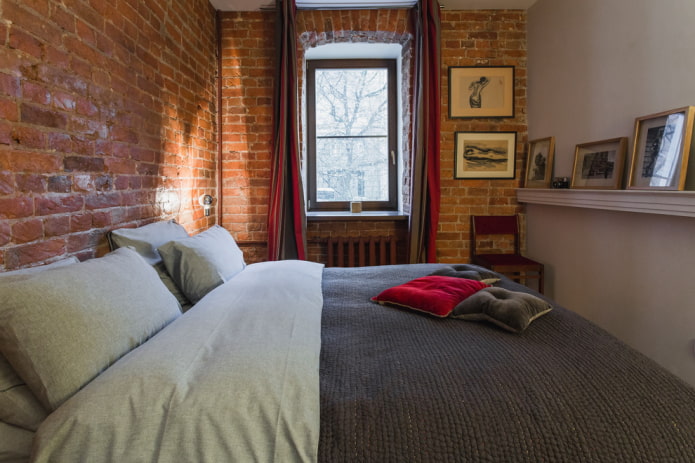
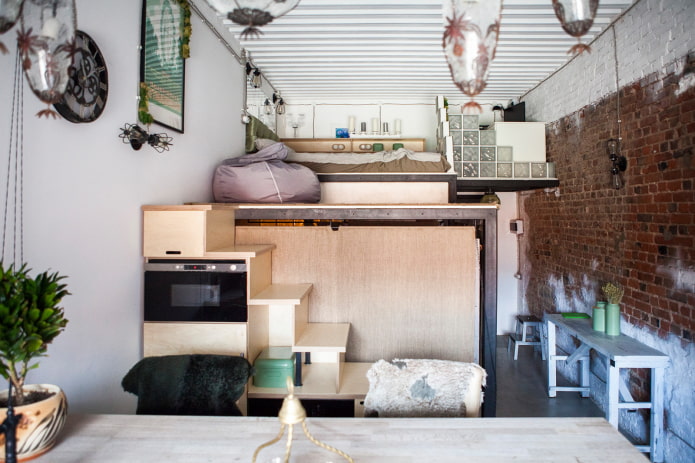
Eclecticism
An eclectic interior combines the best of many unique styles, each of which has absorbed the exclusivity of a certain era. Perfect for modern creative people who do not stop at one style direction and want to create an exclusive design.
The background for a variety of furniture and decor is usually light walls with a classic finish. Retro elements and vintage details can be used as filling. Borrowings from other stylistic directions are welcome.
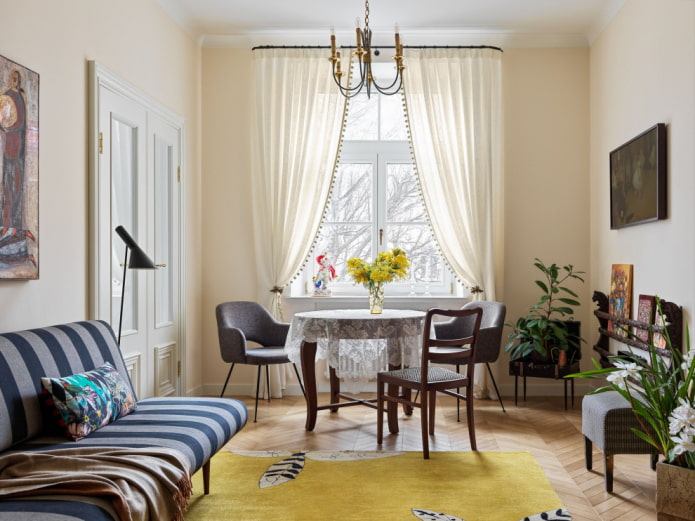

Japandi
A unique interior design style combines elegant decor and Nordic aesthetics. The name comes from a mixture of two definitions: japan and scandi. Japandi gravitates towards natural textures of wood, concrete and stone. The furnishings lack complex shapes, so the style is perfect for small apartments.
The design is subordinated to convenience and orderly life. It does not accept rich and flashy colors, as well as contrasting patterns. Another distinctive feature is the use of low furniture. These features make the interior look cohesive, which is ideal for compact spaces.
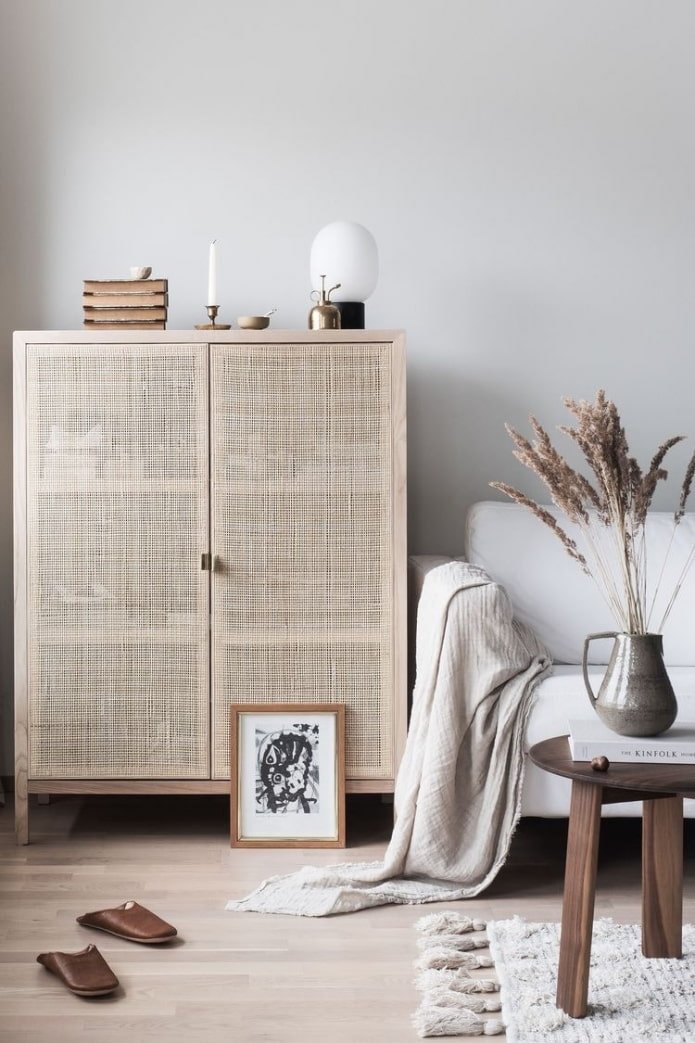
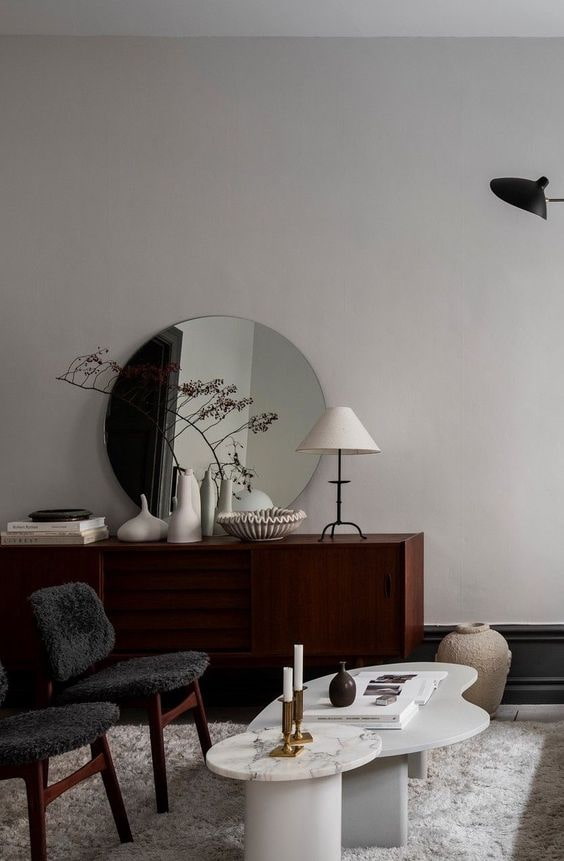
We do not consider popular styles that require a large number of decorative details, pronounced textures and an abundance of furniture: country, including Provence and chalet, English, baroque, hi-tech and fusion. To convincingly style these trends in an apartment, more free space is needed.
Now reading:
- 10 effective methods for finishing door slopes in an apartment + 40 photos for ideas
- Your Complete Guide to Buying a Used Ferrari
- most essential things that every housewife should have in her kitchen.
- Best Drywall Alternatives: What to Choose Instead?
- Firewood Shed for a Summer Cottage: 37 Inspiring Ideas and DIY Assembly Guide